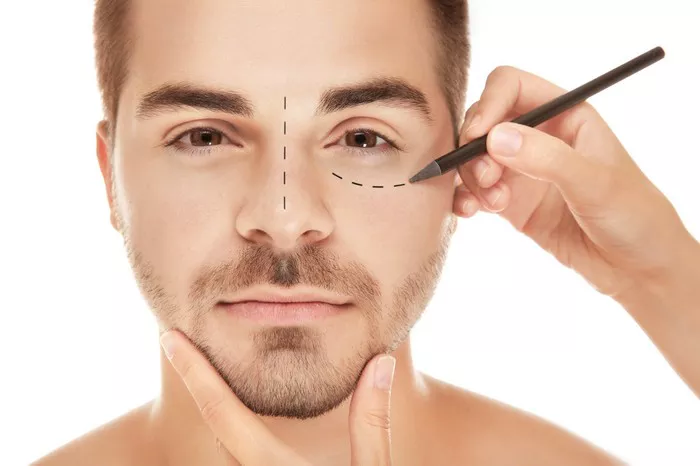Lower eyelid surgery, also known as lower blepharoplasty, is a popular cosmetic procedure aimed at rejuvenating the appearance of the eyes. This surgical intervention targets various aesthetic concerns such as under-eye bags, excess skin, and wrinkles around the lower eyelid area. While the decision to undergo any surgical procedure should be approached cautiously and after thorough consultation with a qualified surgeon, understanding the details of how lower eyelid surgery is performed can help individuals make informed choices. In this article, we will delve into the process of lower eyelid surgery, shedding light on its key steps and expected outcomes.
Step 1: Initial Consultation
The journey to achieving a more youthful and refreshed lower eyelid area begins with an initial consultation with a board-certified plastic surgeon. During this consultation, the surgeon will evaluate your specific concerns, medical history, and overall health status. They may inquire about any prior eye surgeries, medications you are taking, allergies, or other conditions that could affect the surgery or recovery process. It is crucial to provide comprehensive and honest information to ensure a safe and successful procedure.
Step 2: Preparing for Surgery
Once the decision is made to proceed with lower eyelid surgery, the surgeon will guide you through pre-operative preparations. These preparations may include undergoing certain medical tests, discontinuing specific medications that could increase the risk of bleeding, and following any dietary or lifestyle instructions. It is important to follow these guidelines diligently to minimize potential complications and optimize the surgical outcome.
Step 3: Anesthesia Administration
Lower eyelid surgery is typically performed under local anesthesia with sedation. The surgeon will discuss the best anesthesia option for you during the initial consultation. Local anesthesia numbs the area around the eyes while sedation helps to keep you relaxed and comfortable during the procedure. General anesthesia may be considered for more complex cases or if it is deemed more appropriate for the patient’s well-being.
Step 4: Incision Placement
Once the anesthesia has taken effect, the surgeon begins the surgical process by making careful incisions along the natural creases and lines of the lower eyelid. The precise placement of these incisions depends on the individual’s anatomy and desired outcome. The goal is to conceal any resulting scars as much as possible within the natural contours of the eye area.
Step 5: Tissue Removal and Repositioning
After creating the incisions, the surgeon will proceed to remove or reposition the excess fat, muscle, and skin contributing to the appearance of under-eye bags and wrinkles. This step requires meticulous attention to detail to achieve a harmonious and balanced result. The removal or redistribution of fat aims to create a smoother and more youthful contour around the eyes, while excess skin is trimmed away to eliminate sagging and improve tightness.
Step 6: Closure and Sutures
Once the necessary modifications have been made to the underlying tissues, the surgeon will carefully close the incisions using fine sutures. The choice of suture material may vary depending on the surgeon’s preference and the specific needs of the patient. These sutures are typically self-absorbing and do not require removal. The closure of the incisions is performed with precision to ensure minimal scarring and optimal healing.
Step 7: Recovery and Postoperative Care
After the procedure is complete, the patient is moved to a recovery area where they are monitored for a short period before being discharged. It is essential to arrange for someone to drive you home and provide assistance during the initial stages of recovery. The surgeon will provide detailed postoperative care instructions, which may include applying cold compresses to reduce swelling, avoiding strenuous activities, and taking prescribed medications to manage discomfort and prevent infection. Follow-up appointments will also be scheduled to monitor the healing progress and address any concerns.
Step 8: Expected Results
While individual results may vary, lower eyelid surgery can significantly improve the appearance of under-eye bags, wrinkles, and sagging skin. The eyes appear more rested, youthful, and rejuvenated, enhancing overall facial harmony. It is important to note that the final outcomes may take several weeks or months to fully manifest, as the tissues continue to heal and settle into their new position.
Conclusion
Lower eyelid surgery, or lower blepharoplasty, is a surgical procedure designed to address aesthetic concerns related to the lower eyelid area. By carefully removing or repositioning excess fat, muscle, and skin, surgeons can achieve a more youthful and refreshed appearance. The precise steps involved in lower eyelid surgery, from the initial consultation to postoperative care, are crucial for ensuring successful outcomes. If you are considering lower eyelid surgery, consult with a board-certified plastic surgeon to determine if this procedure is right for you and to receive personalized guidance throughout your journey towards achieving your desired results.


